PRINTED BY: Stefan Dominicus . Printing is for personal, private use only. No part of this book may be reproduced or transmitted without
publisher's prior permission. Violators will be prosecuted.
ENGIN EERING MECHANICS
VOLUME 1
Sl VE RSION
EIG HTH EDITION
J.L. MERIAM
L.G. KRAIGE
Virginia Polytechnic Institute
and State University
J.N. BOLTON
Bluefield State College
WILEY
�
PRINTED BY: Stefan Dominicus . Printing is for personal, private use only. No part of this book may be reproduced or transmitted without
publisher's prior permission. Violators will be prosecuted.
On the cover:TheAuditorio deTenerife
the Canary Islands, Spain. It was designed by architect Santiago Calatrava
•Adan Martin" is located in Santa Cruz deTenerife,
the capital of
Valls and was opened in 2003.
Copyright© 2016, 2013 John Wiley & Sons Singapore Pte. Ltd.
Cover Photo: Chris Gascolgne/VIEW Pictures/Newscom. Depiction on cover used by permission of Auditorio
de Tenerife.
Founded in 1807, John Wiley & Sons, Inc. has been a valued source of knowledge and understanding for
more than 200 years, helping people around the world meet their needs and fulfill their aspirations. Our
company is built on a foundation of principles that include responsibility to the communities we serve
and where we live and work. In 2008, we launched a Corporate Citizenship Initiative, a global effort to
address the environmental, social, economic, and ethical challenges we face in our business. Among the
issues we are addressing are carbon impact, paper specifications and procurement, ethical conduct within
our business and among our vendors, and community and charitable support. For more information, please
visit our website: www.wiley.com/go/citizenship.
All rights reserved. This book is authorized for sale in Canada, Europe, Asia, Australia, Africa
and the Middle East only and may not be exported. The content is materially different than products
for other markets including the authorized U.S. counterpart of this title. Exportation of this book to
another region without the Publisher's authorization may be illegal and a violation of the Publisher's
rights. The Publisher may take legal action to enforce its rights.
No part of this publication may be reproduced, stored in a retrieval system, or transmitted in any form or
by any means, electronic, mechanical, photocopying, recording, scanning, or othe.rwise, except as permitted
under Section 107 or 108 of the 1976 United States Copyright Act, without either the prior written
permission of the Publisher or authorization through payment of the appropriate per-eopy fee to the
Copyright Clearance Center, Inc., 222 Rosewood Drive, Danvers, MA 01923, website www.copyright.com.
Requests to the Publisher for permission should be addressed to the Permissions Department, John Wiley
& Sons, Inc., 111 River Street, Hoboken, NJ 07030, (201) 748-6011, fax (201) 748-6008, website
http://www. wiley. com/go/permissions.
ISBN: 978-1-119-04467-3
Printed in Asia
10 9 8 7 6 5 4 3 2 1
�
PRINTED BY: Stefan Dominicus . Printing is for personal, private use only. No part of this book may be reproduced or transmitted without
publisher's prior permission. Violators will be prosecuted.
fOREWORD
This series of textbooks was begun in 1951 by the late Dr. James L. Meriam. At that
time, the books represented a revolutionary transformation in undergraduate mechanics
education. They became the definitive textbooks for the decades that followed as well as
models for other engineering mechanics texts that have subsequently appeared. Published
under slightly different titles prior to the 1978 First Editions, this textbook series has
always been characterized by logical organization, clear and rigorous presentation of the
theory, instructive sample problems, and a rich collection of real-life problems, all with a
high standard of illustration. In addition to the U.S. versions, the books have appeared in
SI versions and have been translated into many foreign languages. These textbooks collec
tively represent an international standard for undergraduate texts in mechanics.
The innovations and contributions of Dr. Meriam (1917-2000) to the field of engineer
ing mechanics cannot be overstated. He was one of the premier engineering educators of
the second half of the twentieth century. Dr. Meriam earned the B.E., M.Eng., and Ph.D.
degrees from Yale University. He had early industrial experience with Pratt and Whitney
Aircraft and the General Electric Company. During the Second World War he served in the
U.S. Coast Guard. He was a member of the faculty of the University of California-Berkeley,
Dean of Engineering at Duke University, a faculty member at the California Polytechnic
State University, and visiting professor at the University of California-Santa Barbara,
finally retiring in 1990. Professor Meriam always placed great emphasis on teaching, and
this trait was recognized by his students wherever he taught. He was the recipient of sev
eral teaching awards, including the Benjamin Garver Lamme Award, which is the highest
annual national award of the American Society of Engineering Education (ASEE).
Dr. L. Glenn Kraige, coauthor of the Engineering Mechanics series since the early
1980s, has also made significant contributions to mechanics education. Dr. Kraige earned
his B.S., M.S., and Ph.D. degrees at the University of Virginia, principally in aerospace
engineering, and he is Professor Emeritus of Engineering Science and Mechanics at
Vrrginia Polytechnic Institute and State University. During the mid-1970s, I had the singular
pleasure of chairing Professor Kraige's graduate committee and take particular pride in
the fact that he was the first of my fifty Ph.D. graduates. Professor Kraige was invited by
Professor Meriam to team with him, thereby ensuring that the Meriam legacy of textbook
authorship excellence would be carried forward to future generations of engineers.
In addition to his widely recognized research and publications in the field of spacecraft
dynamics, Professor Kraige has devoted his attention to the teaching of mechanics at both
introductory and advanced levels. His outstanding teaching has been widely recognized
and has earned him teaching awards at the departmental, college, university, state, re
gional, and national levels. These awards include the Outstanding Educator Award from
the State Council of Higher Education for the Commonwealth of Virginia. In 1996, the
v
�
PRINTED BY: Stefan Dominicus . Printing is for personal, private use only. No part of this book may be reproduced or transmitted without
publisher's prior permission. Violators will be prosecuted.
vi Foreword
Mechanics Division of ASEE bestowed upon him the Archie Higdon Distinguished Educator
Award. The Carnegie Foundation for the Advancement of Teaching and the Council for Advance
ment and Support of Education awarded him the distinction ofVirginia Professor of the Year for
1997. In his teaching, Professor Kraige stresses the development of analytical capabilities along
with the strengthening of physical insight and engineering judgment. Since the early 1980s, he
has worked on personal-computer software designed to enhance the teaching/learning process
in statics, dynamics, strength of materials, and higher-level areas of dynamics and vibrations.
Welcomed as a new coauthor for this edition is Dr. Jeffrey N. Bolton, Assistant Professor of
Mechanical Engineering Technology at Bluefield State College. Dr. Bolton earned his B.S., M.S.,
and Ph.D. in Engineering Mechanics from Virginia Polytechnic Institute and State University.
His research interests include automatic balancing of six-degree-of-freedom elastically-mounted
rotors. He has a wealth of teaching experience, including at Virginia Tech, where he was the
2010 recipient of the Sporn Teaching Award for Engineering Subjects, which is primarily chosen
by students. In 2014, Professor Bolton received the Outstanding Faculty Award from Bluefield
State College. He has the unusual ability to set high levels of rigor and achievement in the
classroom while establishing a high degree of rapport with his students. In addition to main
taining time-tested traditions for future generations of students, Dr. Bolton will bring effective
application of technology to this textbook series.
The Eighth Edition of Engineering Mechanics continues the same high standards set by
previous editions and adds new features of help and interest to students. It contains a vast col
lection of interesting and instructive problems. The faculty and students privileged to teach or
study from the Meriam/Kraige/Bolton Engineering Mechanics series will benefit from several
decades of investment by three highly accomplished educators. Following the pattern of the pre
vious editions, this textbook stresses the application of theory to actual engineering situations,
and at this important task it remains the best.
John L. Junkins
Distinguished Professor of Aerospace Engineering
Holder of the Royce E. Wisebaker '39 Chair in Engineering Innovation
Texas A&M University
College Station, Texas
�
PRINTED BY: Stefan Dominicus . Printing is for personal, private use only. No part of this book may be reproduced or transmitted without
publisher's prior permission. Violators will be prosecuted.
PREFACE
engineering,
and a framework for most of the branches
mechanics is both a foundation
Many of the topics in such areas as civil, mechanical,
Engineering
of engineering.
agricultural
subjects of statics and dynamics. Even in a discipline such
titioners,
manufacturing
involved.
aerospace,
and
mechanics itsel� are based upon the
engineering,
prac
process, may find themselves first having to deal with the mechanics
components of a robotic device or a
in the course of considering
and of course engineering
the electrical
as electrical
Thus, the engineering mechanics
sequence is critical
to the engineering curriculum.
Not only is this sequence needed in itself, but courses in engineering
to solidify the student's
mathematics,
in which to strengthen
physics, and graphics.
problem-solving
of other important subjects,
understanding
In addition,
abilities.
these courses serve as excellent
settings
mechanics also serve
including applied
PHILOSOPHY
The primary purpose of the study of engineering
of mechanics; also required is the ability to visualize
This capacity requires more than a mere knowledge of the physical and
principles
in terms of real materials,
mechanics is to develop the capacity
to predict the effects of force and motion while carrying out the creative design functions
of engineering.
mathematical
configurations
which govern the behavior of machines and structures.
mechanics course is to help the student develop this ability to visualize,
to problem formulation. Indeed,
often a more important experience
the principles and their limitations are learned together within the context of engineering
application.
model is
progress is made when
than its solution. Maximum
of a meaningful mathematical
One of the primary objectives
actual constraints,
the construction
and the practical
which is so vital
physical
limitations
in a
There is a frequent tendency in the presentation
of mechanics to use problems mainly
When the first view is allowed to predominate,
and unrelated to engineering
theory rather than to develop theory for the purpose of solving
problems tend to become overly
as a vehicle to illustrate
problems.
idealized
demic, and uninteresting.
formulating
second view provides by far the stronger motive for learning theory and leads to a better
balance between theory and application.
providing
with the result that the exercise becomes dull, aca
in
the need for and meaning of theory. The
This approach deprives the student of valuable experience
problems and thus of discovering
The crucial role played by interest
possible motive for learning cannot be overemphasized.
we should stress the understanding
Furthermore, as mechanics educators,
the strongest
and purpose in
that, at
best, theory can only approximate
the real world of mechanics rather than the view that
vii
�
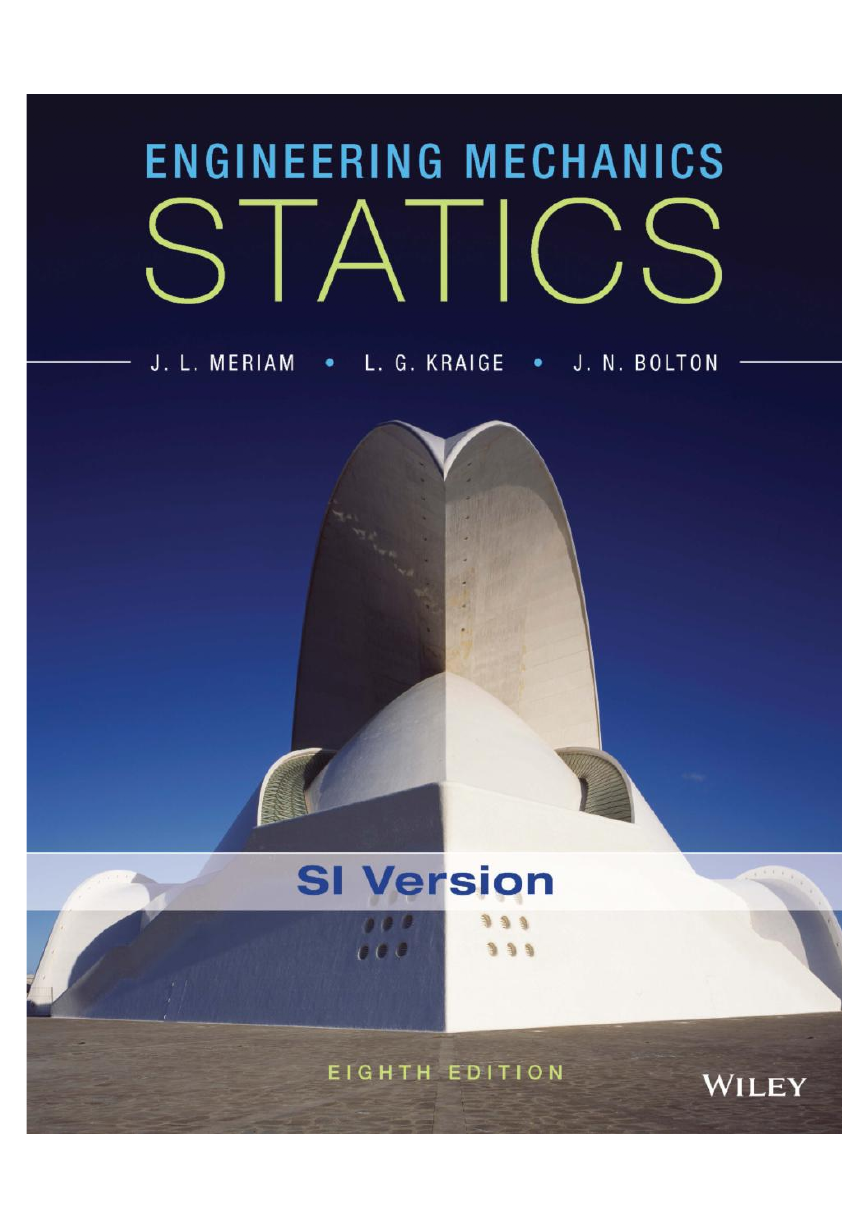
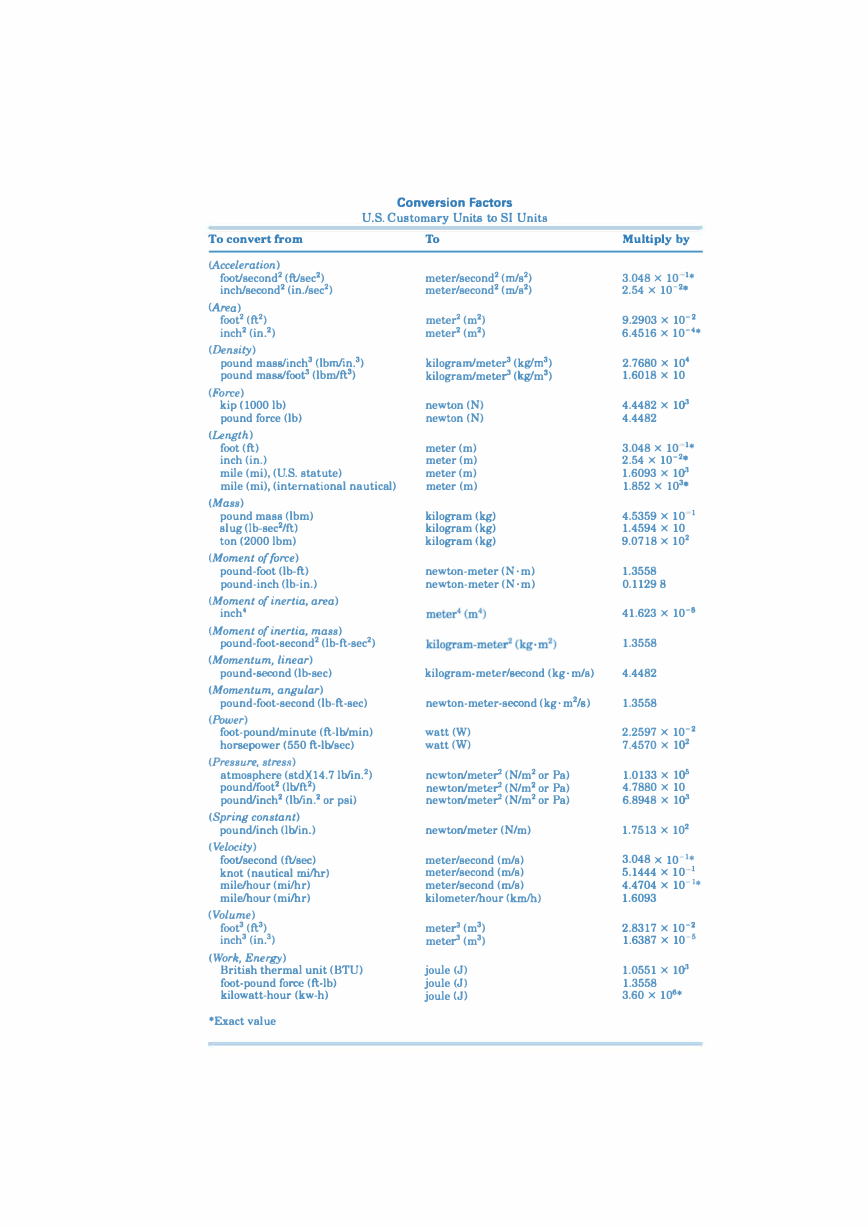
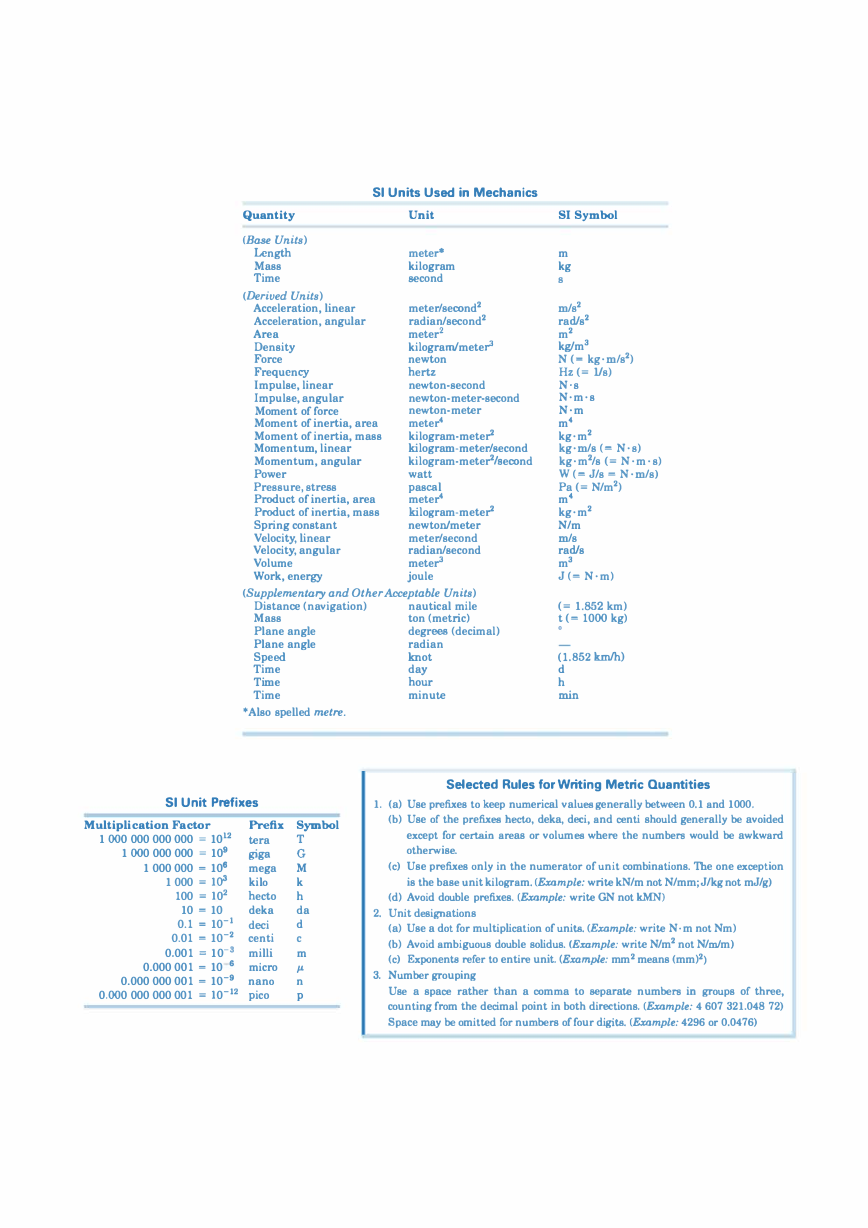
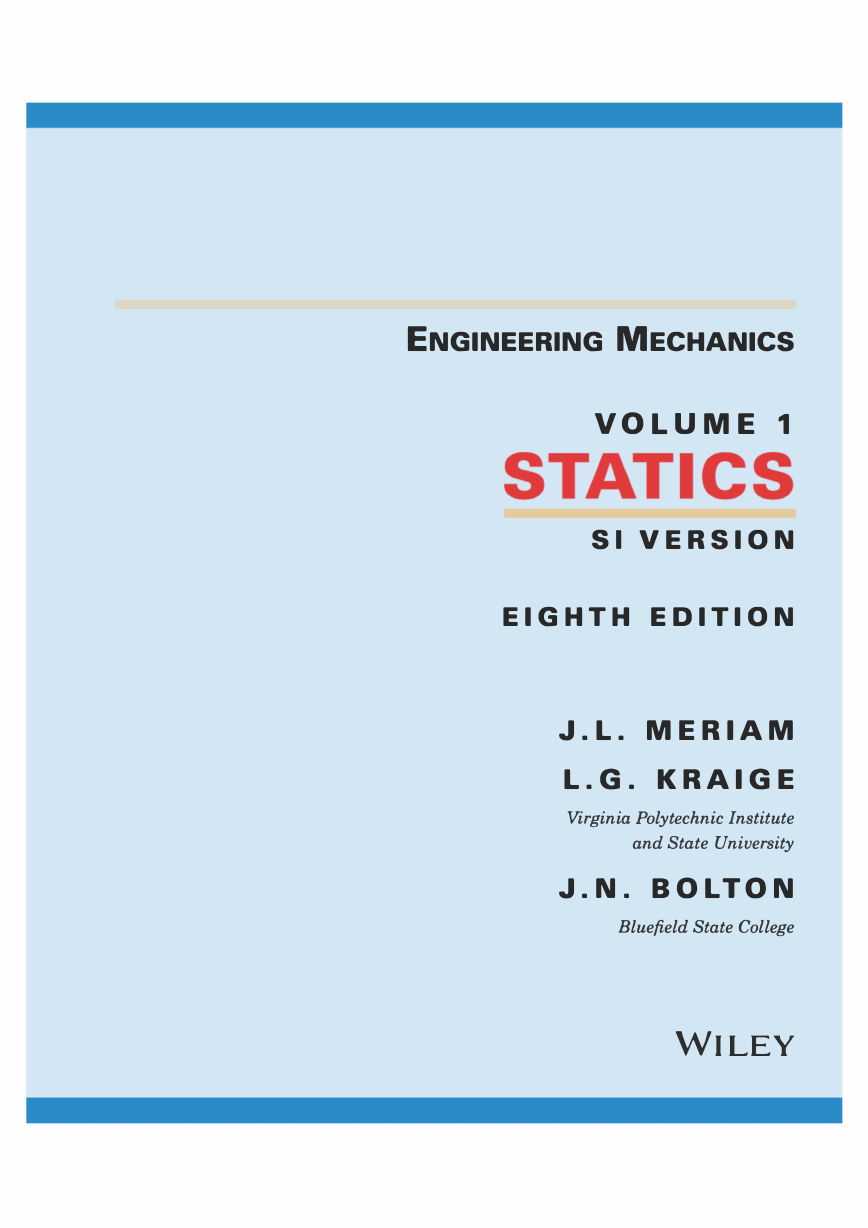
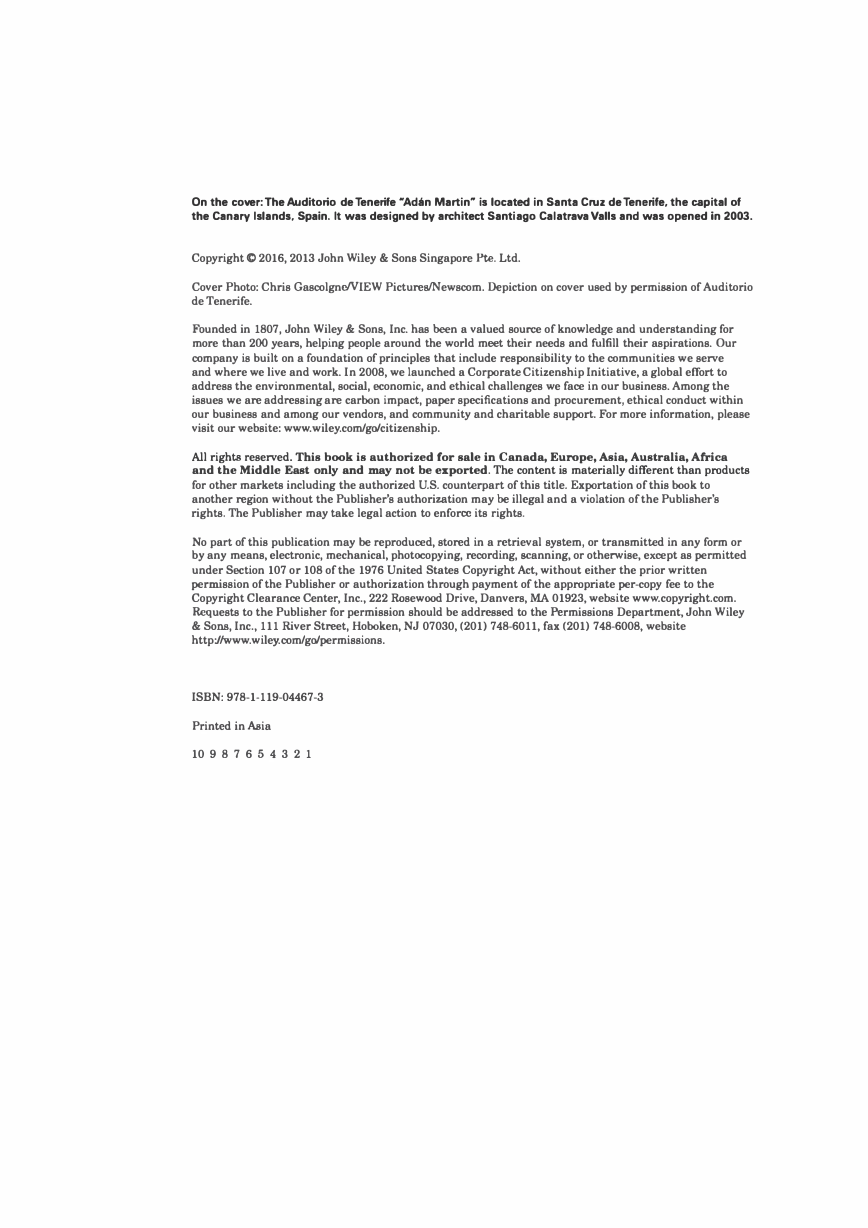
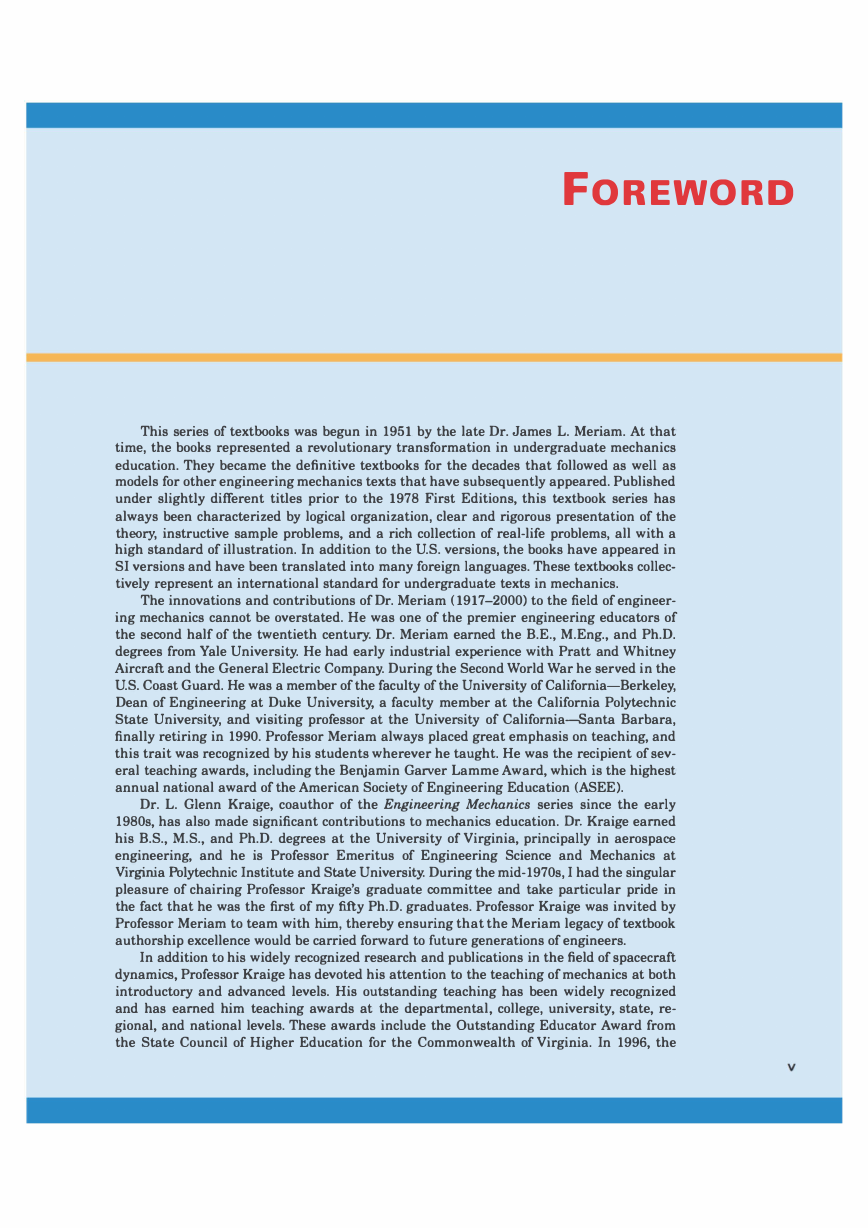
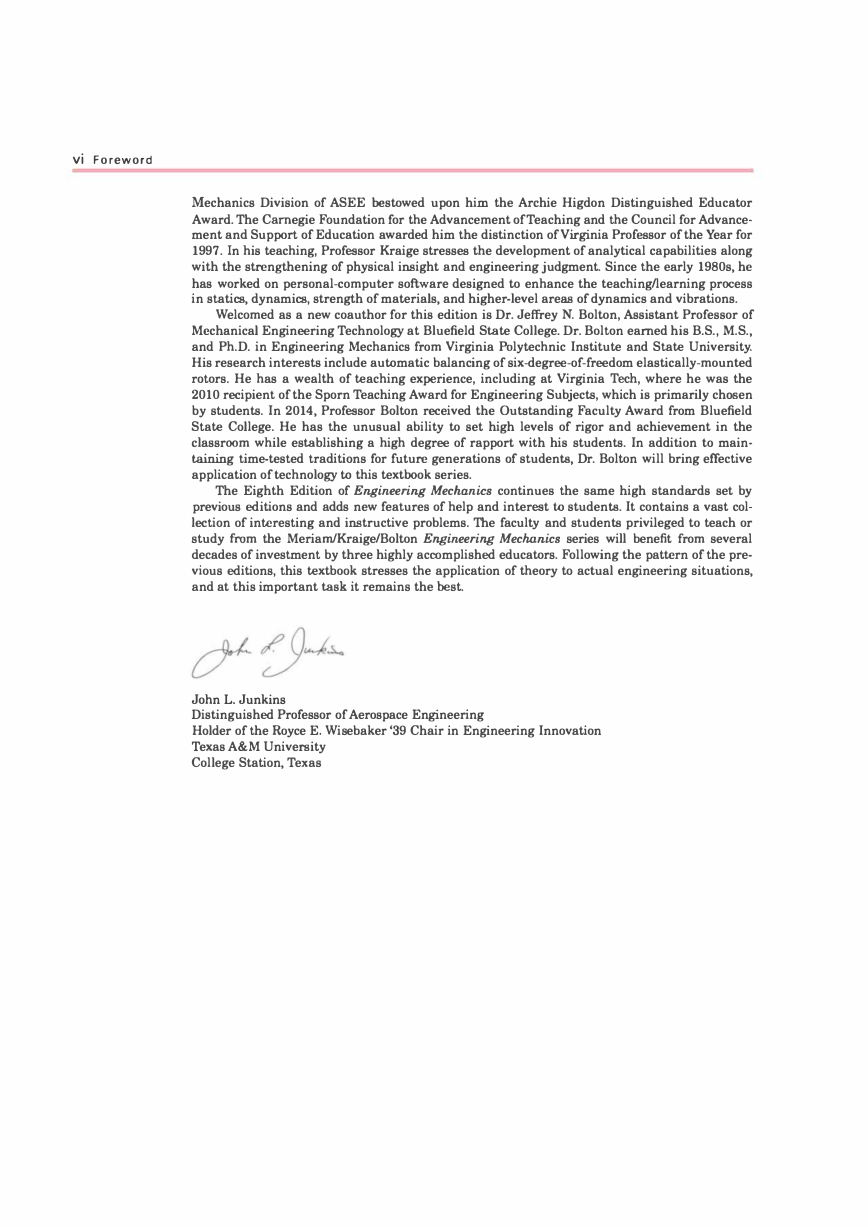
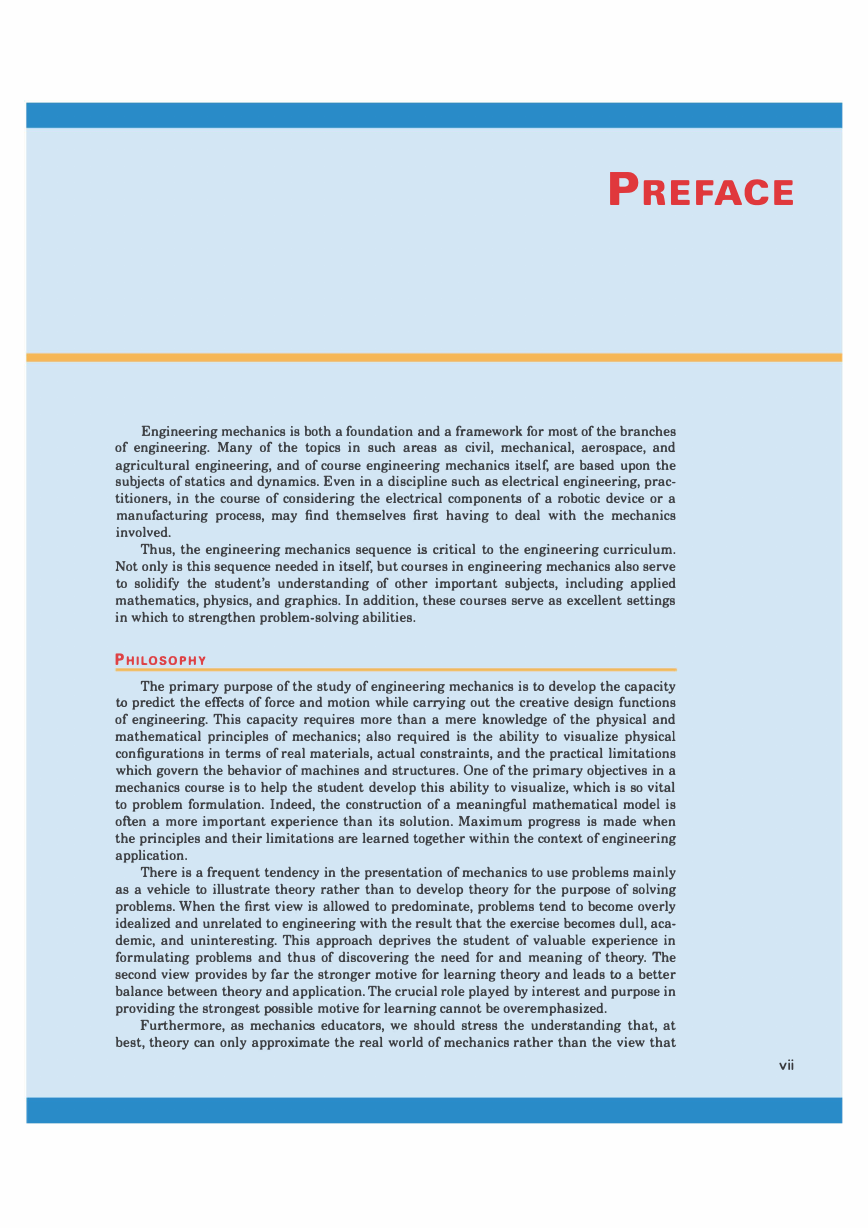








 2023年江西萍乡中考道德与法治真题及答案.doc
2023年江西萍乡中考道德与法治真题及答案.doc 2012年重庆南川中考生物真题及答案.doc
2012年重庆南川中考生物真题及答案.doc 2013年江西师范大学地理学综合及文艺理论基础考研真题.doc
2013年江西师范大学地理学综合及文艺理论基础考研真题.doc 2020年四川甘孜小升初语文真题及答案I卷.doc
2020年四川甘孜小升初语文真题及答案I卷.doc 2020年注册岩土工程师专业基础考试真题及答案.doc
2020年注册岩土工程师专业基础考试真题及答案.doc 2023-2024学年福建省厦门市九年级上学期数学月考试题及答案.doc
2023-2024学年福建省厦门市九年级上学期数学月考试题及答案.doc 2021-2022学年辽宁省沈阳市大东区九年级上学期语文期末试题及答案.doc
2021-2022学年辽宁省沈阳市大东区九年级上学期语文期末试题及答案.doc 2022-2023学年北京东城区初三第一学期物理期末试卷及答案.doc
2022-2023学年北京东城区初三第一学期物理期末试卷及答案.doc 2018上半年江西教师资格初中地理学科知识与教学能力真题及答案.doc
2018上半年江西教师资格初中地理学科知识与教学能力真题及答案.doc 2012年河北国家公务员申论考试真题及答案-省级.doc
2012年河北国家公务员申论考试真题及答案-省级.doc 2020-2021学年江苏省扬州市江都区邵樊片九年级上学期数学第一次质量检测试题及答案.doc
2020-2021学年江苏省扬州市江都区邵樊片九年级上学期数学第一次质量检测试题及答案.doc 2022下半年黑龙江教师资格证中学综合素质真题及答案.doc
2022下半年黑龙江教师资格证中学综合素质真题及答案.doc